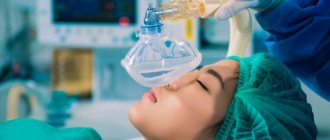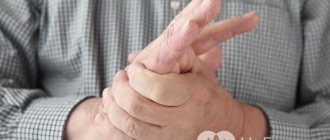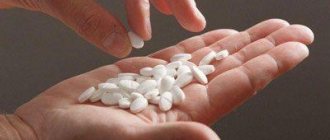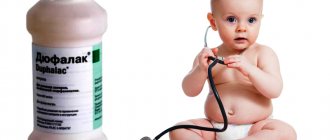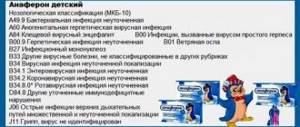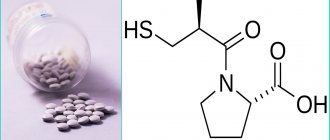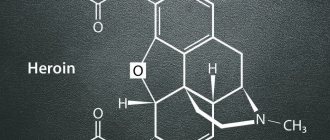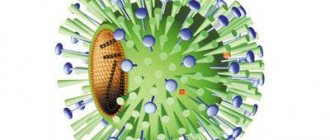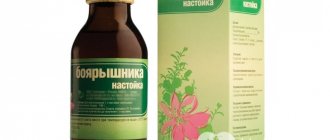Many pharmacological drugs with narcotic effects are prohibited from free sale by regulatory authorities. There is a high probability that this will soon affect baklosan, a drug used in the treatment of cerebral palsy . Drug addicts use the drug for its euphoric effect in combination with other toxic compounds. An overdose of baclosan is often diagnosed in patients in intensive care units. The absence of a comprehensive antidote significantly increases the possibility of death.
Pharmacological action of Baklosan
The drug belongs to the group of centrally acting muscle relaxants and is a GABAB receptor agonist. Baklosan, by reducing the excitability of the terminal sections of sensitive afferent fibers and suppressing interneurons, inhibits poly- and monosynaptic transmission of nerve impulses; reduces pre-tension of muscle spindles.
Baklosan has no effect on the transmission of nerve impulses at neuromuscular synapses.
Reduces clonic convulsions and painful spasms in neurological diseases that are accompanied by skeletal muscle spasms. Helps expand the range of available movements in the joints, facilitates the process of active and passive kinesiotherapy (massage, physical exercise, manual therapy).
Release form
The composition of Baklosan includes the following ingredients:
- baclofen;
- potato starch;
- magnesium stearate;
- ethylcellulose;
- lactose;
- talc;
- gelatin.
Snow-white convex tablets of Baklosan are available in doses of 0.01 and 0.025 grams. Round tablets of 0.01 grams have a dividing strip. Tablets are packaged in polypropylene containers in quantities of 50 pieces. The container is in a cardboard package along with instructions for use.
Baklosan is available in pills of 10 mg and 25 mg. The Baklosan 10 mg pill is marked with a dividing line. The Baklosan 25 mg pill has no dividing hazard. Baklosan pills are round, biconvex, snow-white in color.
One pill of the product contains 25 mg or 10 mg of baclofen as an active substance.
Excipients: lactose, gelatin, potato starch, magnesium stearate, talc, ethylcellulose.
Baklosan is a biconvex, round, snow-white pill with a dividing strip. 50 of these pills in a polypropylene jar, one of these in a cardboard box.
Contraindications
According to the instructions, Baklosan is not prescribed for:
- Parkinson's disease;
- epilepsy;
- hypersensitivity to baclofen;
- psychosis;
- convulsions;
- peptic ulcer;
- lactose intolerance, lactase deficiency, glucose-galactose malabsorption;
- during pregnancy and breastfeeding.
The drug is prescribed with caution in the presence of:
- chronic renal failure;
- cerebrovascular insufficiency;
- cerebral atherosclerosis;
- in childhood (up to three years) and old age.
First aid for overdose
Immediately after the first signs of poisoning appear, you must call an ambulance. The fact is that a complex antidote for removing baclosan from the body has not yet been synthesized . Therefore, comprehensive measures are taken to prevent dangerous symptoms of overdose. While waiting for the doctor to arrive, first aid should be provided to the drug addict:
- Lay down, cover, calm down. If a person is unconscious, he needs to be turned on his side - this way he will not choke on vomit.
- Clear your stomach. It is necessary to dilute potassium permanganate in a liter of warm water until a light pink color appears. Give the victim a drink and induce vomiting until clear liquid leaves the stomach .
- Prepare strong sweet tea. The tannins and tannins contained in the drink will bind unabsorbed baclosan.
Any adsorbents or enterosorbents absorb the active substance of the tablets well. You can use several tablets of activated carbon as an antidote.
In case of overdose, a person must be hospitalized for further treatment. Complex detoxification therapy is carried out in a hospital setting. If necessary, the person is connected to a ventilator.
Directions for use and dosage
According to the instructions, Baklosan is taken orally during meals.
Initially, the drug is prescribed at a dosage of 5 mg three times a day. Then, every three days, the dose is increased by 5 mg until a therapeutic effect appears (as a rule, this occurs when taking 30-75 mg of Baclosan per day). In this case, the maximum dose of the drug is 100 mg per day.
The final dosage of Baklosan is selected so that a decrease in muscle tone does not cause excessive myasthenia gravis and does not impair motor functions.
If the patient has hypersensitivity to the drug, the initial dose should be 5-10 mg per day. Subsequent dose increases should occur more slowly.
For hemodialysis and chronic renal failure, the dose is 5 mg per day.
Baclosan 25 mg tablets are used in patients whose condition requires increased doses of baclofen (75-100 mg per day).
In patients over 65 years of age, increasing the dosage of Baclosan should be carried out carefully, since there is a high probability of side effects of the drug.
In childhood, the initial dose of Baklosan is 5 mg three times a day. If necessary, the dosage is carefully increased by 5 mg every three days until a therapeutic effect appears.
For children aged 3-6 years, the recommended dosage is no more than 20-30 mg per day; 6-10 years - 30-60 mg per day, over 10 years - 2.5 mg per kilogram of weight.
Cancellation of Baklosan tablets should occur gradually over 7-14 days.
If you miss the next dose of tablets, it is not recommended to take the drug in double dosage.
Mechanism of addiction development
As a medical product, baklosan is used in the treatment of traumatic brain injuries and pathologies complicated by spastic convulsive manifestations. The drug is taken under the supervision of a doctor with mandatory periodic laboratory tests. This is necessary to monitor the effectiveness of treatment and prevent overdose.
You should not stop taking baklosan immediately. After 5-7 days of regular use, addiction develops, so doctors recommend a gradual reduction in dosage.
Initially, the medicine was synthesized to eliminate and prevent epileptic seizures.
Subsequently, baklosan was no longer used for preventive purposes, as patients developed persistent addiction and increased the risk of overdose. This side effect developed as a result of the strong influence of the active substance on the central nervous system. Baklosan is widely used as an analgesic and an antidepressant that improves mood . The psychotropic properties of the tablets cause euphoria, increase motor activity, and eliminate anxiety and restlessness. There is a feeling of a surge of strength, the person does not need to rest for several hours. The effectiveness of baclosan in the treatment of:
- cerebral palsy;
- consequences of a stroke;
- pathologies of the spinal column of infectious, tumor, traumatic etiology;
- multiple sclerosis;
- inflammation of the meninges;
Paradoxically, in some European countries baclosan is used to treat alcohol and drug addiction. With its help, the state of withdrawal and withdrawal is relieved. Often, after leaving the clinic, patients continued to use baklosan, but in combination with hard drugs. Citizens with alcohol addiction do the same - they take the drug along with alcohol-containing drinks.
Under the influence of baklosan, a person loses the ability to self-control and sound self-esteem. He is overwhelmed with energy and a thirst for creativity; problems seem insignificant. Once the drug is eliminated by the urinary system, the likelihood of developing severe depression increases.”
The possibility of an overdose with this medicine lies in the effect of the main substance on the body. Baklosan does not cause chemical or physical addiction. A person develops psychological dependence.
Side effects
According to reviews, Baklosan may cause side effects.
Musculoskeletal system: myalgia.
Nervous system: sedation, drowsiness, weakness, dizziness, confusion, insomnia, gait disturbance, ataxia, depression, euphoria, asthenia, tremor, nightmares, hallucinations, dry mouth, nystagmus, dysarthria, paresthesia.
Respiratory system: respiratory depression.
Cardiovascular system: arterial hypotension, decreased cardiac output.
Gastrointestinal tract: nausea, vomiting, dyspepsia, diarrhea, constipation, abdominal pain, liver dysfunction.
Sense organs: visual disturbances, accommodation paresis.
Reproductive system: erectile dysfunction.
Kidneys and urinary system: polyuria, dysuria, enuresis, urinary retention.
Skin and subcutaneous tissue: rash, hyperhidrosis.
General disorders: hypothermia.
Reviews of Baklosan also indicate an increase in spasticity, which is a paradoxical reaction to this remedy.
Effect of baclofen
The medicinal effect of the drug is to inhibit the transmission of nerve impulses and reduce muscle tension. As evidenced by the available reviews of baklosan, within an hour after administration it causes a decrease in pain, a surge of strength, and energy. Efficiency and the ability to move without rest forces you to continue taking the drug. But you should not drink baklosan on your own - use without a doctor’s prescription is fraught with negative effects.
Side effects of taking the medicine are nausea and vomiting, confusion and drowsiness, euphoria followed by apathy and depression, weight gain, tremors and hallucinations. If you drink baclosan uncontrolled, an overdose can cause convulsions, respiratory depression, coma, and even death. With long-term use, the natural release of dopamine in the brain decreases, which provokes depression and apathy.
special instructions
Periodic monitoring of liver transaminase activity in patients with liver disease and blood glucose levels in patients with diabetes mellitus is required.
Side effects of Baclosan may be transient, so they must be differentiated from the symptoms of the disease for which treatment is being used.
Persons taking Baklosan should refrain from performing potentially dangerous activities associated with increased attention and speed of psychomotor reactions.
Clinical picture of overdose
The lethal dose of baklosan is individual for each person and is directly dependent on the state of health and the duration of drug addiction. For example, in patients with endocrine diseases and liver pathologies, taking several tablets can provoke excess production of hormones, which is an extremely dangerous condition for human health.
If the drug addict has a history of stomach and duodenal ulcers, taking too many pills will cause painful abdominal cramps and heavy bleeding. Death will result from perforation of the ulcer.
Accidental or intentional overdose is characterized by the following symptoms:
- Slowing of mental activity, confusion. The person does not understand and is not aware of the essence of what is happening.
- Lack of muscle reflex. The drug addict is unable to remain in an upright position; falls, bruises, and head injuries are possible.
- Dizziness gives way to deep fainting.
- The skin is pale, chills, fever, and cold sweat appear.
Fatal outcome as a result of overdose occurs due to the development of central respiratory failure due to the anesthetic effect of baclosan. Insufficient ventilation of the lungs occurs against the background of a lack of molecular oxygen inside the bloodstream. It is replaced by carbon dioxide, intoxication with which provokes:
- increased heart rate;
- arterial hypotension;
- breathing disorders.
Low oxygen concentration accelerates blood circulation and promotes swelling of large and small vessels. The drug addict experiences shortness of breath and coughing when trying to inhale. A panic state develops. After a few minutes, the person falls into an unconscious state, followed by a coma. In the absence of medical intervention, swelling of the pulmonary parenchyma and brain occurs, which becomes the cause of death.
Why do you need to search for analogues?
- The online medical service is designed to select the optimal replacement for medications.
- Find cheap analogues for expensive drugs.
- For drugs that do not have complete analogues, look at the list of drugs that are most similar in use.
- If you are a professional, then the help of artificial intelligence will help you select treatment.
The drug "Baklosan"
":
2
complete analogues, the cheapest - Lioresal Intrathecal (2000ք);
30
analogues in action, the most similar is Tizanil (145-277ք)
Treatment methods
Therapy involves the following procedures:
- An overdose leads to a decrease in heart rate and a drop in blood pressure. To normalize the condition, glucocorticoids or adrenaline are used.
- There is a high risk of respiratory failure. Eliminate with artificial ventilation.
- To cleanse the body of Baklosan, a solution of sodium chloride or Ringer's with the addition of diuretics is injected dropwise.
- Supports blood circulation.
If first aid is provided in a timely manner and the patient is taken to the hospital with the initial symptoms of an overdose, the prognosis is favorable in most cases.
Negative consequences
The medication is taken under the supervision of the attending physician.
This measure is necessary not only to record the effectiveness of treatment, but also to prevent excessive doses and the development of addiction, which contributes to them.
Formation of habituation
Baclofen is addictive
Initially, the substance was synthesized in order to eliminate epileptic attacks and prevent them. Subsequently, the medicine was no longer used for prophylaxis. Because patients developed persistent addiction, which increased the risk of overdose.
Mechanism
After 5-7 days of systematic use of baclofen, dependence develops. This effect is due to the strong effect of the active substance on the central nervous system. The psychotropic properties of the drug cause a state of euphoria, increase motor activity, and eliminate feelings of anxiety and uncertainty.
A person experiences a surge of strength, the need for rest disappears, efficiency and an irresistible desire for communication increases. This effect lasts up to 10-12 hours.
However, after the drug is removed from the body, severe depression develops.
Possibility of physical dependence
The main physical effect is decreased muscle tone (muscle hypotonia). This is the cause of excess energy and euphoria. But taking excessive doses results in weakness, clumsiness of movements, and decreased reflexes.
However, chemical and physical dependence does not occur.
Possibility of psychological dependence
Not wanting to experience the usual feelings of anxiety and fear that return after the end of the drug effect, patients begin to take baclofen regularly.
The drug provokes the development of serious psychological dependence, in which it is practically impossible to stop taking the drug on your own.
When possible attempts to do this, a person experiences withdrawal syndrome, which is characterized by atony, convulsions, cramps, migraines, depression, and pain throughout the body. Therefore, doctors recommend a gradual reduction in dosage.
Drug addiction and alcoholism
Paradoxically, in some European countries this remedy is used in the treatment of drug and alcohol addicts.
On the one hand, the medication relieves withdrawal symptoms. However, quite often patients, after discharge from the hospital, continue to take the drug, but in tandem with hard drugs. By prolonging and enhancing the effect of drugs, this drug provokes severe poisoning with baklosan and the development of polydrug addiction.
Baklosan is incompatible with alcohol
Alcohol addicts do the same thing, combining alcohol with the drug. Which leads to alcohol intoxication. Because the medication is not compatible with alcohol. This is due to the fact that when combining these substances, a person may not feel intoxicated. But after the medicinal effect ceases, the reverse process occurs.
Combination with medications
When taking baclosan simultaneously with tricyclic antidepressants, muscle hypotension increases.
Concurrent use of antiparkinsonian medications increases the risk of developing hallucinatory manifestations and psychomotor overexcitation.

